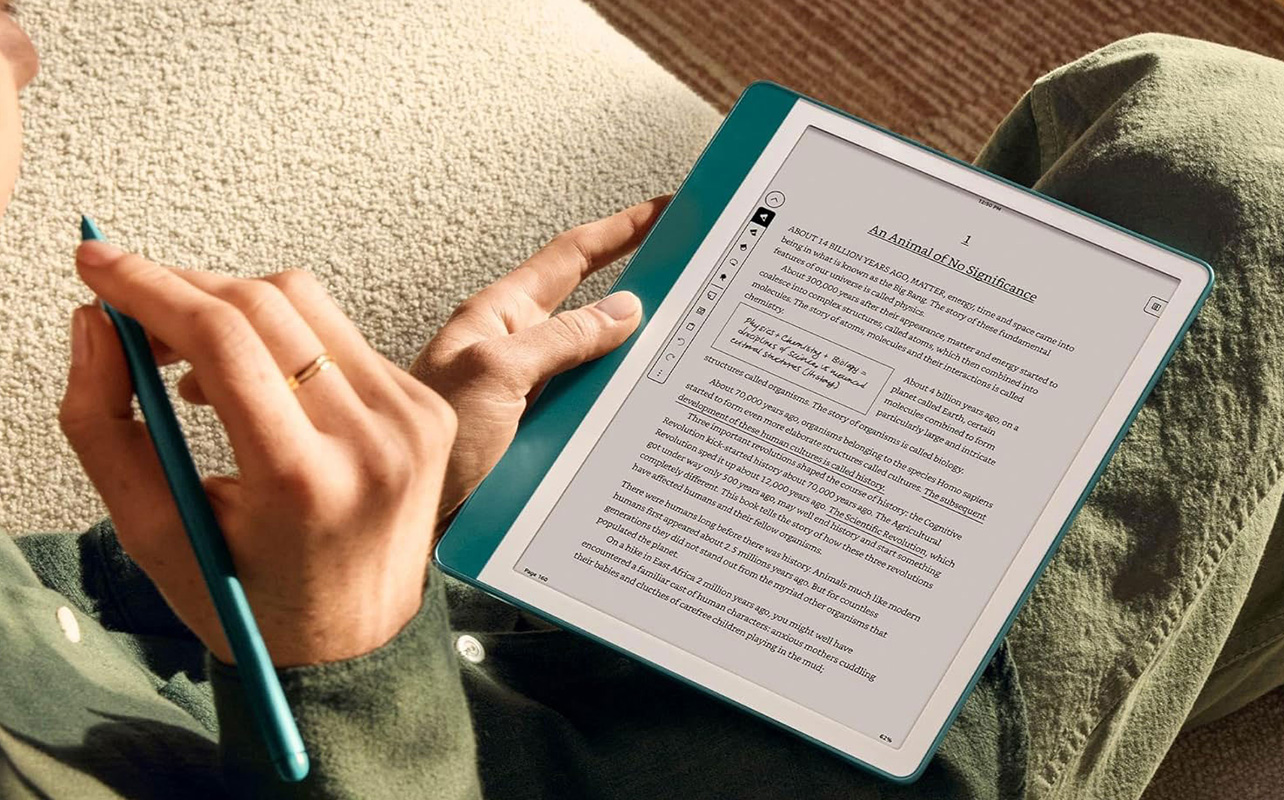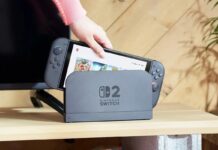
Let’s say it’s a busy monday morning. Your backpack’s packed with three notebooks, a tablet, two textbooks, and a tangle of chargers. Now imagine replacing all of that with one slim, paper-like device your digital notepad for school that feels like writing with pen on paper but saves everything digitally. That’s the kind of upgrade today’s students are embracing.
Unlike regular tablets, these devices like the reMarkable 2, Boox Note Air, Kindle Scribe, and Kobo Elipsa focus solely on helping you take notes, sketch diagrams, read textbooks, and stay organised, without distractions. Think of them as the evolved version of your school notebook, designed for the digital age. This article will walk you through how a digital notepad works, how it’s different from tablets or paper notebooks, who it’s best for, and whether it’s the right fit for your school routine.
What is a digital notepad, and how is it different from a tablet?
A digital notepad is a device built for reading and writing, using E Ink technology instead of a traditional LCD or OLED screen. E Ink looks and feels like paper it’s matte, easy on the eyes, and doesn’t glow. This makes it perfect for long study sessions, outdoor reading, or late-night review without the harsh glare of blue light. But what really sets it apart from a tablet?
- No app store: Digital notepads aren’t loaded with games, social media, or entertainment apps.
- Distraction-free focus: They’re designed for one thing learning.
- Battery life that lasts for days or even weeks: Unlike a tablet, these devices don’t need constant charging.
- Paper-like writing experience: Paired with a stylus, they offer the tactile feel of handwriting no more slippery glass.
Most models let you handwrite notes, read and annotate PDFs, sketch diagrams, and sync everything to the cloud. Some even convert your handwriting into searchable, typed text bringing together the best of both worlds.

Top ways to use a digital notepad for school
Here are some of the most practical ways to use your digital notepad for school, whether you’re taking notes in class or reviewing them before an exam.
Take notes by hand or typing
Prefer writing over typing? Digital notepads are made for that. The stylus mimics a real pen, while the screen offers just enough texture to feel like paper. Whether you’re in a lecture hall or reviewing flashcards, taking notes feels natural and immediate. Some models also support Bluetooth keyboards if you want to type longer sections.
Organise subjects by folders or tags
Forget flipping through a messy binder. Digital notepads let you create separate folders for each class, tag pages with topics, and quickly search for keywords across all your notes. It’s like having your own digital filing cabinet portable, tidy, and searchable.
Read and annotate textbooks or PDFs
Got a 50-page reading assignment? Load the PDF or eBook right onto your device. You can highlight text, underline key points, and add handwritten comments directly in the margins. It’s active reading, without the paper clutter and without running out of highlighter ink. If you’re primarily looking for a reading-first device, you might also want to explore our eReader buying guide to compare dedicated e-readers and hybrid notepads.
Sketch diagrams and solve math problems
Need to draw a graph, sketch a molecule, or map out a history timeline? The stylus makes it easy to draw freely and accurately. Great for visual learners and science students, you can switch pen styles, adjust stroke thickness, and erase with a tap. No more wasting pages in a notebook or redrawing from scratch.
Sync notes to cloud platforms
Devices like reMarkable, Boox, and Kindle Scribe connect to cloud services like Google Drive, Dropbox, or their own apps. This means your notes are backed up automatically and can be accessed from your phone, laptop, or tablet. Forgot your device at home? No problem your entire study library is one login away.
Review and revise your work efficiently
Studying isn’t just about note-taking it’s also about reviewing. Digital notepads let you easily revisit past notes, highlight important ideas, or edit your thoughts before an exam. Some devices let you duplicate or reorganise your pages so you can summarise a semester’s worth of material in one clean, final version.

What types of students benefit most from digital notepads?
Not every student needs a digital notepad for school, but for many, it can make a meaningful difference. Here are some types of students who can get the most out of a digital notepad:
Visual learners
If you learn better through doodles, diagrams, or mind maps, digital notepads give you the space to think visually. You can draw, annotate, and brainstorm all on one page without worrying about running out of space or making mistakes.
Minimalists and on-the-go learners
Tired of carrying heavy notebooks, pens, and planners? A digital notepad lightens the load. It combines everything into a single, organised device that fits in your bag. Plus, no more messy handwriting or torn pages it’s all neat and searchable.
Students sensitive to eye strain
Hours of studying on backlit screens can lead to headaches and fatigue. E Ink displays are much easier on the eyes, with no harsh lighting or screen glare. Whether you’re studying outside or working late, your eyes will thank you.
Digital-first learners and hybrid students
Already using Google Docs, Microsoft OneDrive, or Dropbox? A digital notepad fits right in. Sync your handwritten notes to the cloud, collaborate on group projects, or convert notes into typed text with ease. It’s perfect for students navigating both online and in-person classes.

Pros and cons of using a digital notepad for school
While digital notepads can transform the way students take notes and stay organised, they’re not a one-size-fits-all solution. To help you decide if it fits your study style, here’s a quick overview of the biggest advantages and a few potential drawbacks of using a digital notepad for school:
| Pros | Cons |
| Distraction-free, no social media | No app store or multitasking |
| Paper-like feel with stylus | Limited colour, no video playback |
| Lightweight and portable | May need a laptop for full functionality |
| Long battery life (days to weeks) | Some models can be expensive |
| Sync notes to cloud for easy access | May not replace textbooks for all subjects |
How does it compare to an iPad or laptop?
When a digital notepad makes sense
If you already have a laptop or tablet, a digital notepad is a perfect companion. Use it to take notes in class, read textbooks, or plan your week without distractions. It’s especially useful if you prefer handwriting over typing and want to reduce your screen time.
When a tablet or laptop might be better
If you need one device that does everything join Zoom classes, type essays, edit videos, and browse the internet a tablet or 2-in-1 laptop may be a better fit. You can still use note-taking apps like OneNote or Notability with a stylus for handwriting. To explore more versatile options, check out our tablet and iPad buying guide for a side-by-side comparison of models that balance productivity and performance.

Choosing the right model for school
Here’s a quick look at some of the top digital notepad options for students:
| Device | Best for | Stylus included | Special features |
| reMarkable 2 | Distraction-free writing | No (Sold separately) | Best writing feel, ultra-minimalist design |
| Boox note air | Versatile usage | Yes | Runs Android, supports apps like OneNote & Dropbox |
| Kobo elipsa 2E | Reading + note-taking | Yes | Direct writing on eBooks & PDFs, OverDrive integration |
| Kindle scribe | Amazon ecosystem lovers | Yes | Works with Kindle books, recent updates improving note tools |
Each of these offers a slightly different experience. The reMarkable feels closest to paper, Boox offers app flexibility, Kobo is great for reading-focused students, and Kindle Scribe ties in with Amazon’s book library.
Is a digital notepad right for you or your student?
If you love the feel of handwriting, hate lugging around multiple notebooks, or find yourself easily sidetracked by apps and pop-ups, then yes a digital notepad could be the school companion you’ve been missing. Whether you’re a high schooler keeping your backpack light, a university student juggling PDFs, or a visual learner mapping out ideas, it offers a clutter-free, focused way to study.
That said, it’s not meant to do everything. Pair it with a laptop or tablet, and you’ve got a powerful, balanced setup: one device for focus, the other for functionality. Curious to see which one fits your study style? You’ll find a wide range of digital notepads along with specs, stylus details, and student-friendly bundles available online and in-store at Best Buy Canada. Your next school essential might just be a tap away.




